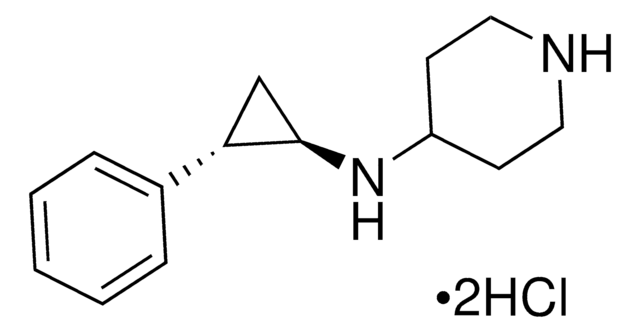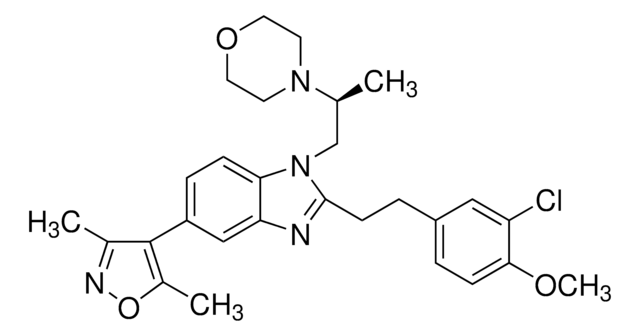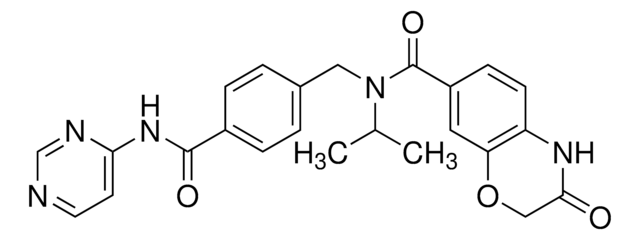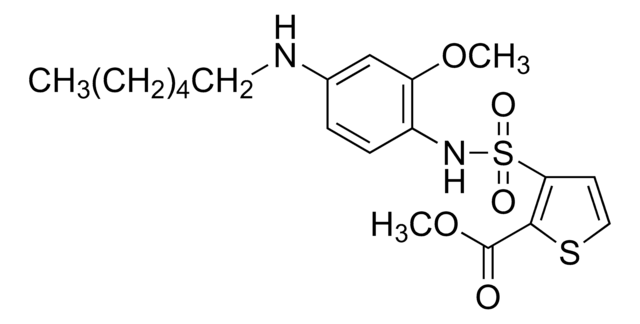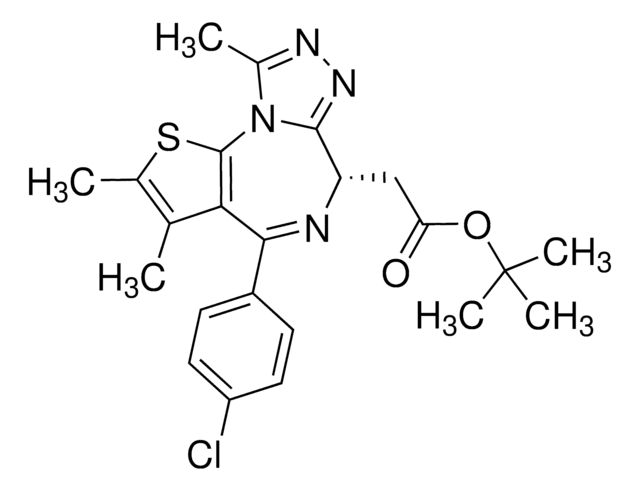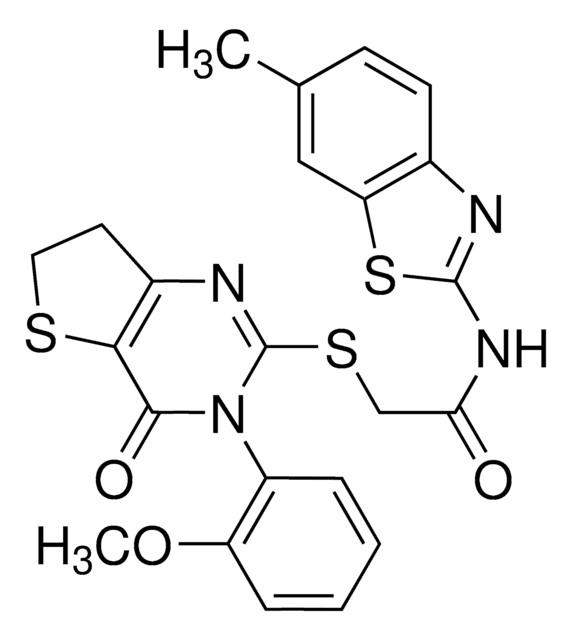SML1107
SGC0946
≥98% (HPLC)
Synonym(s):
1-(3-((((2R,3S,4R,5R)-5-(4-Amino-5-bromo-7H-pyrrolo[2,3-d]pyrimidin-7-yl)-3,4-dihydroxytetrahydrofuran-2-yl)methyl)(isopropyl)amino)propyl)-3-(4-(tert-butyl)phenyl)urea, 5-Bromo-7-[5-deoxy-5-[[3-[[[[4-(1,1-dimethylethyl)phenyl]amino]carbonyl]amino]propyl](1-methylethyl)amino]-beta-D-7H-Pyrrolo[2,3-d]pyrimidin-4-amine
About This Item
Recommended Products
Quality Level
Assay
≥98% (HPLC)
form
powder
color
white to beige
solubility
DMSO: 20 mg/mL, clear
storage temp.
−20°C
SMILES string
BrC1=CN([C@@H]2O[C@H](CN(CCCNC(NC3=CC=C(C(C)(C)C)C=C3)=O)C(C)C)[C@@H](O)[C@H]2O)C4=C1C(N)=NC=N4
InChI
1S/C28H40BrN7O4/c1-16(2)35(12-6-11-31-27(39)34-18-9-7-17(8-10-18)28(3,4)5)14-20-22(37)23(38)26(40-20)36-13-19(29)21-24(30)32-15-33-25(21)36/h7-10,13,15-16,20,22-23,26,37-38H,6,11-12,14H2,1-5H3,(H2,30,32,33)(H2,31,34,39)/t20-,22-,23-,26-/m1/s1
InChI key
IQCKJUKAQJINMK-HUBRGWSESA-N
Related Categories
Biochem/physiol Actions
SGC0649 is the negative control for the active probe, SGC0946. To request a sample of the negative control from the SGC, click here.
To learn about other SGC chemical probes for epigenetic targets, visit sigma.com/sgc
Features and Benefits
Other Notes
related product
Signal Word
Danger
Hazard Statements
Precautionary Statements
Hazard Classifications
Acute Tox. 3 Oral
Storage Class Code
6.1C - Combustible acute toxic Cat.3 / toxic compounds or compounds which causing chronic effects
WGK
WGK 3
Flash Point(F)
Not applicable
Flash Point(C)
Not applicable
Regulatory Listings
Regulatory Listings are mainly provided for chemical products. Only limited information can be provided here for non-chemical products. No entry means none of the components are listed. It is the user’s obligation to ensure the safe and legal use of the product.
JAN Code
SML1107-25MG:
SML1107-5MG:
SML1107-VAR:
SML1107-BULK:
Choose from one of the most recent versions:
Certificates of Analysis (COA)
Don't see the Right Version?
If you require a particular version, you can look up a specific certificate by the Lot or Batch number.
Already Own This Product?
Find documentation for the products that you have recently purchased in the Document Library.
Our team of scientists has experience in all areas of research including Life Science, Material Science, Chemical Synthesis, Chromatography, Analytical and many others.
Contact Technical Service